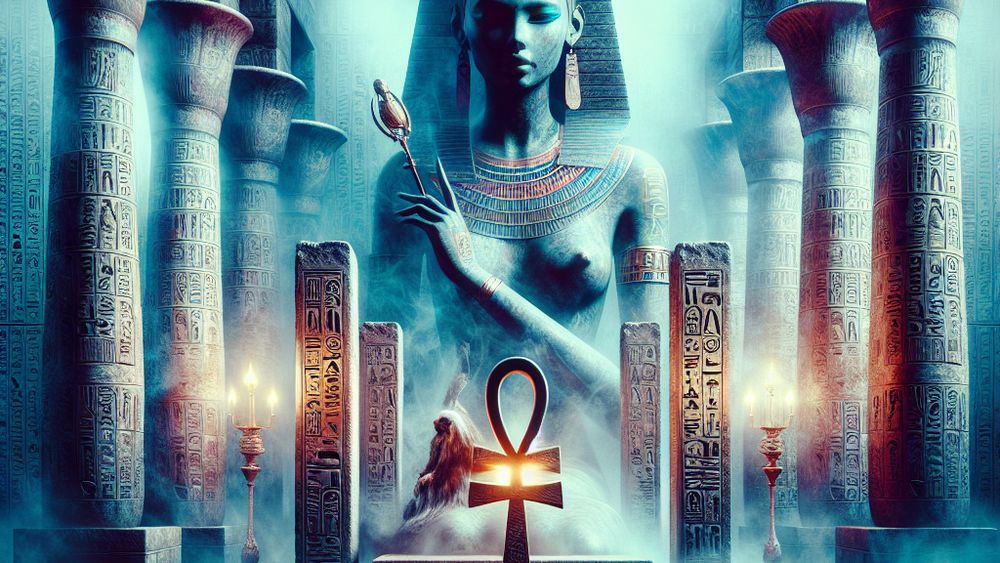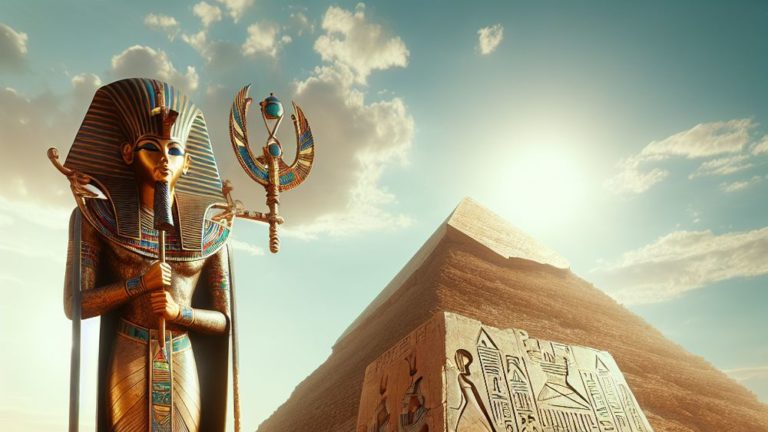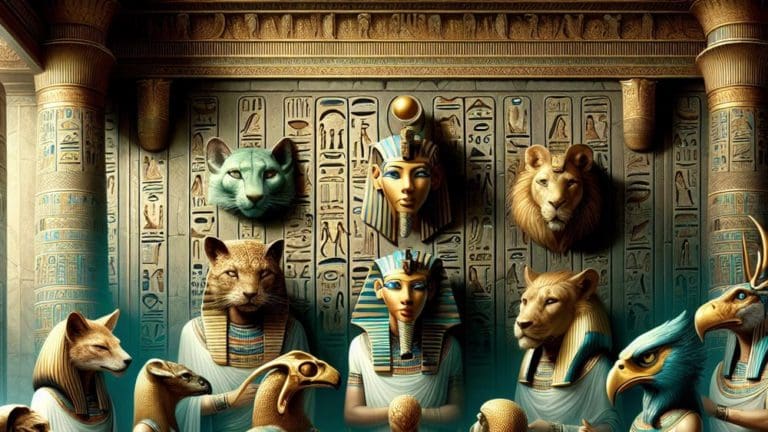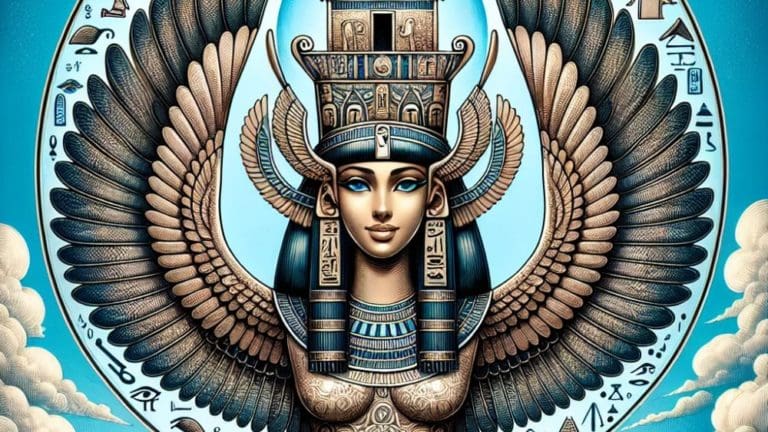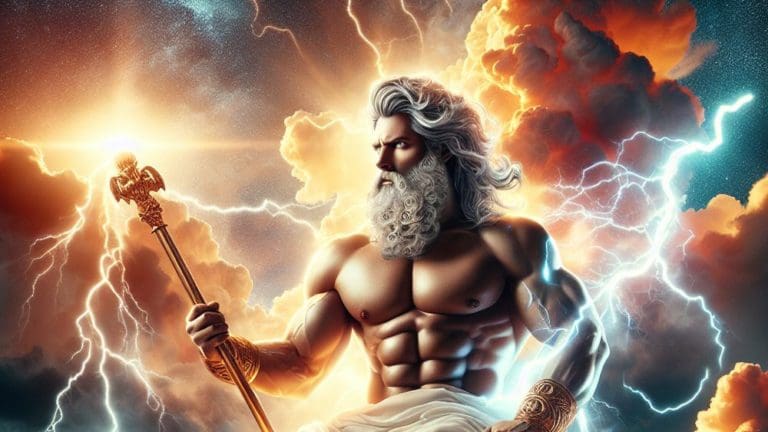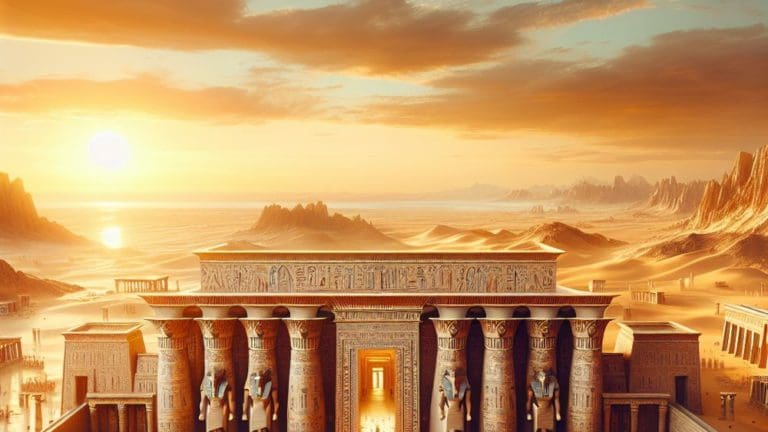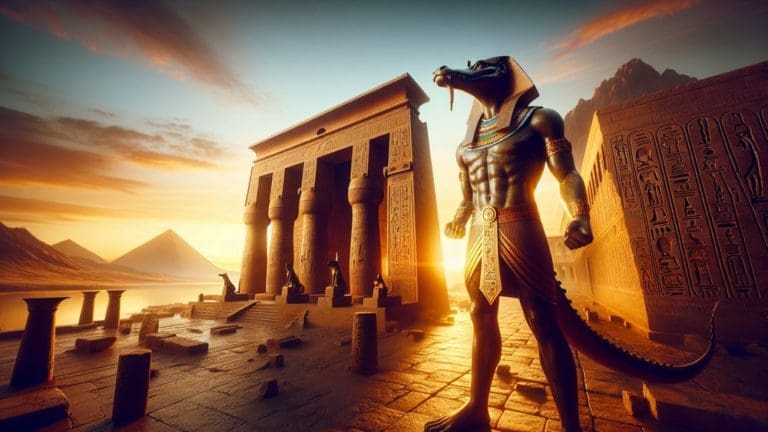Unveiling The Enigma Of The Egyptian God Neith
Unveiling The Enigma Of The Egyptian God Neith
Ever gazed into the depth of ancient Egyptian culture and found yourself mesmerized by its deities, each more enigmatic than the last? Among these deities, the Egyptian god Neith, shrouded in mystery and grandeur, beckons the curious and the scholarly alike to unveil her secrets.
Her story is not just a tale of mythology; it’s a journey through time, reflecting the evolution of an entire civilization’s beliefs and values. Neith’s identity, one of the oldest in Egyptian mythology, morphs across epochs, challenging us to piece together her true significance.
Key Points:
- Neith is an enigmatic Egyptian goddess with evolving roles throughout history.
- She was revered as a goddess of war, creator deity, underworld guide, and symbol of royal power.
- Neith’s symbols include the bow and arrows, the waters of creation, and the red crown of Lower Egypt.
- She embodies both creator and warrior aspects, weaving the cosmos into existence and protecting the order of the universe.
- Neith’s connections to other deities, like Ra and Sobek, reveal her importance in Egyptian religious cosmology.
- Her influence extended beyond Egypt, with worship in Libya and impact on Mediterranean cultures.
- Worship of Neith in ancient Egypt involved elaborate rituals, temple construction, and sacrifices to honor her dual nature as creator and protector.
Peeling Back the Layers of Neith’s Identity
In the quest to understand Neith, we embark on a multilayered journey through history, symbolism, and worship. Each layer peeled back reveals more about her roles, evolution, and the profound impact she had on Egyptian society and beyond.
The Origins and Evolution of Neith in Egyptian Mythology
The origins of the Egyptian god Neith are steeped in antiquity, tracing back to the Predynastic Period of Egypt. Often depicted as a hunter and protector, her identity evolved over centuries, intricately weaving into the fabric of Egyptian mythology.
To grasp the essence of Neith’s transformation:

- Pre-dynastic Period: Considered a goddess of war and hunting.
- Old Kingdom: Revered as a creator deity, embodying the primeval waters of creation.
- Middle Kingdom: Associated with the underworld, guiding the souls of the dead.
- New Kingdom: Integrated into state religion, symbolizing royal power and protection.
Neith’s transformation throughout Egyptian history reflects a multifaceted evolution from a goddess of war and hunting to a symbol of royal power and protection.
Neith’s Roles and Symbolism
Neith’s roles in Egyptian mythology were as varied as they were significant, painting her as a deity of unparalleled complexity. Her symbols and titles provide clues to her multifaceted nature.
A snapshot of her roles and symbols includes:
- Creator of the Cosmos: Emblematic of the waters of creation.
- Protector of the Dead: Guiding souls in the underworld.
- Warrior Goddess: Symbolized by her weapons, the bow and arrows.
- Mother of the Gods: Often called the mother of Ra, the sun god.
Depictions and Worship of Neith Through the Ages
The veneration of Neith traversed various epochs, mirroring changes in religious practices and artistic depictions. Her worship was widespread, from the grand temples of Sais to the personal amulets of ordinary Egyptians.
| Period | Depictions | Worship Centers |
|---|---|---|
| Predynastic | Animal skins, bows, and arrows | Small shrines, nature |
| Old Kingdom | Shield and crossed arrows | Memphis, Thebes |
| Middle Kingdom | Wearing the red crown of Lower Egypt | Sais |
| New Kingdom | As a lioness or woman with a green face | Temples across Egypt |
Through these depictions and centers of worship, we see the transforming image of Neith across the ages, embodying various aspects of life, death, and even creation itself.
Neith’s image evolved across different time periods, embodying diverse aspects of life and creation through changing depictions and worship centers.
The Multifaceted Nature of Neith
The Egyptian god Neith exemplifies a rich tapestry of ancient deity characteristics, personifying the complexity of Egyptian mythology. Her enigmatic essence invites us to unravel the mysteries surrounding her multifarious nature.
Neith as the Creator and the Warrior
Neith’s identity as both creator and warrior presents a fascinating duality within Egyptian mythology. As the creator, she is often depicted weaving the world into existence, her loom crafting the cosmos and the fates of men.
- As a creator, Neith was believed to give birth to the sun each morning, weaving the light into the fabric of the day.
- As a warrior, she was depicted wielding a bow, her arrows swift and decisive, protecting the sovereignty of the gods and the order of the universe.
This duality not only highlights her as a protector and nurturer but also showcases her significance in maintaining balance within the cosmos. Her warriors’ spirit combined with her maternal instincts makes her a deity of unparalleled depth and complexity.
The Connection Between Neith and Other Deities
Neith’s connections to other deities reveal the intricacies of Egyptian religious cosmology. She was considered the mother of the crocodile god Sobek, highlighting her role as a creator goddess.
- Ra, the sun god, was sometimes said to be her son, illustrating her paramount importance in the creation myths.
- Her relationships with Isis and Osiris underline the interconnectedness of Egyptian deities, where Neith played roles in stories of death and rebirth, weaving the destinies of gods and mortals alike.
These connections not only illustrate her maternal and protective qualities but also underscore her significance in the pantheon of Egyptian gods, serving as a linchpin in the fabric of mythology.
Neith’s connections with other deities highlight her crucial role in Egyptian cosmology and mythology.
Neith’s Influence Beyond Egypt
The influence of the Egyptian god Neith stretched beyond the borders of Egypt, illuminating her widespread veneration and significant impact on cultures connected to the ancient Egyptians.
- In Libya, Neith was worshipped as a war deity, her prowess in battle revered by those beyond Egypt’s borders.
- Her worship indicates the cultural exchange and diffusion of religious practices, highlighting the dynamic interconnectedness of ancient societies.
Neith’s multifaceted nature and widespread veneration underscore her importance not only within Egyptian mythology but also in the broader context of ancient Mediterranean religions.
FAQs
1. How was Neith worshipped in ancient Egypt?
Neith was worshipped in ancient Egypt through elaborate rituals and the construction of temples dedicated to her honor, such as the magnificent structure in Sais. Her followers would offer sacrifices and prayers, believing in her dual nature as a creator and protector.
2. What are the most famous myths involving Neith?
The most famous myths involving Neith include her role as the arbitrator in the dispute between Horus and Set, showcasing her wisdom and judicial power. Another celebrated myth is her creation of the world, weaving the cosmos into existence with her shuttle.
3. How did Neith’s role in Egyptian religion evolve over time?
Neith’s role in Egyptian religion evolved from being primarily a war goddess to a deity of wisdom and creation. Over centuries, her iconography and worship practices expanded, reflecting her complex nature and vital role in the Egyptian pantheon.
4. Are there any modern representations or cults of Neith?
While traditional cults of Neith may not exist in modern times, her influence survives in art, literature, and the study of Egyptian mythology. She remains a symbol of strength and creation, inspiring those who dive into the fascinating depths of ancient Egyptian beliefs.
Conclusion
Our journey through the enigmatic world of the Egyptian god Neith has unveiled the multifaceted nature of this ancient deity, from her origins in myth to her lasting impact beyond the sands of Egypt. We’ve glimpsed her roles as creator, warrior, and wise arbitrator, enriching our understanding of the Egyptian spiritual landscape and its deep connections to the cycles of life and the universe. I hope this exploration ignites a spark of curiosity in you, encouraging further discovery into the mysteries that the Egyptian god Neith carries. Let’s continue to uncover the secrets of the past, sharing our insights and experiences along the adventurous path of learning.
Thank you for joining me on this expedition into history. Until our next adventure, keep the flame of curiosity alive and tread softly upon the pathways of the ancients.
Warm regards,
Cedric

